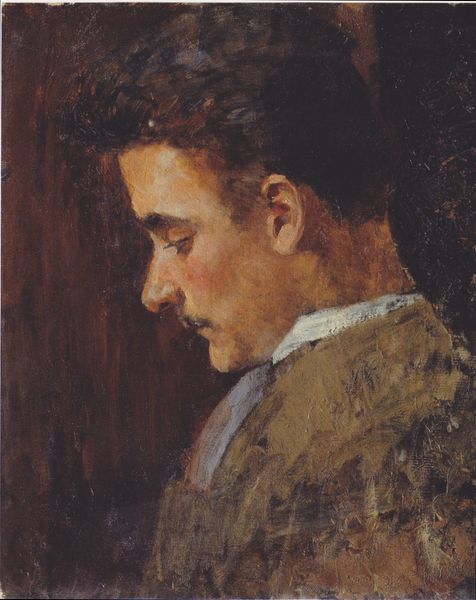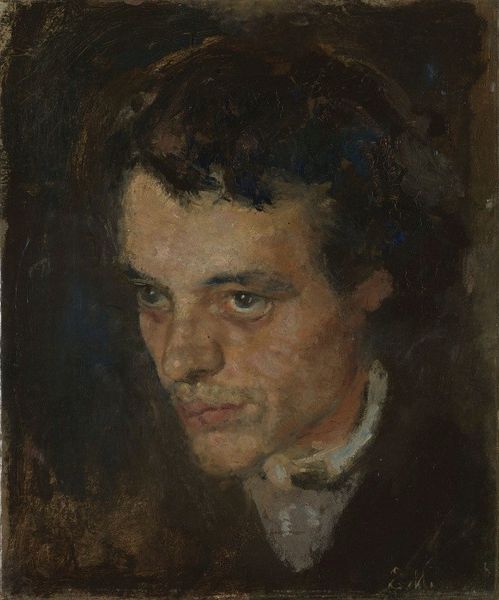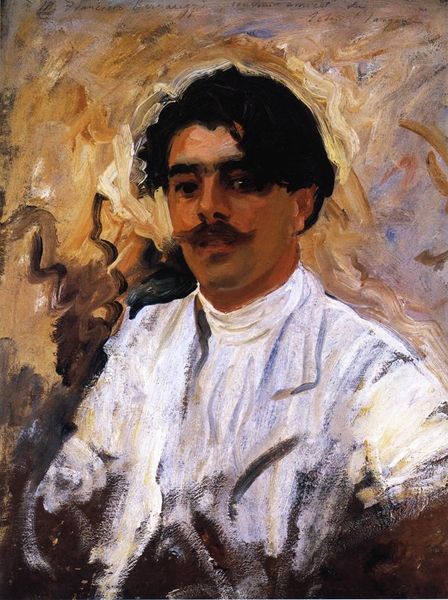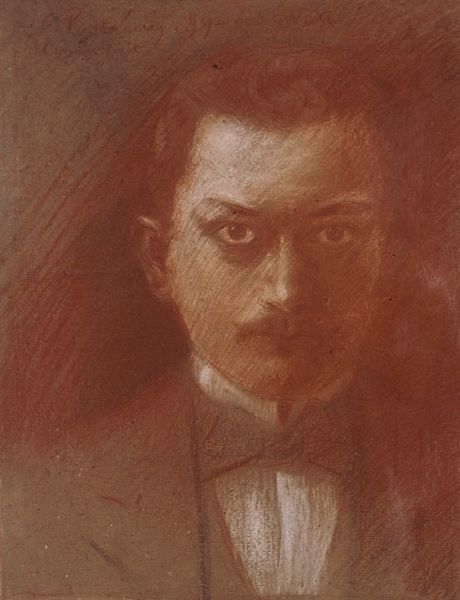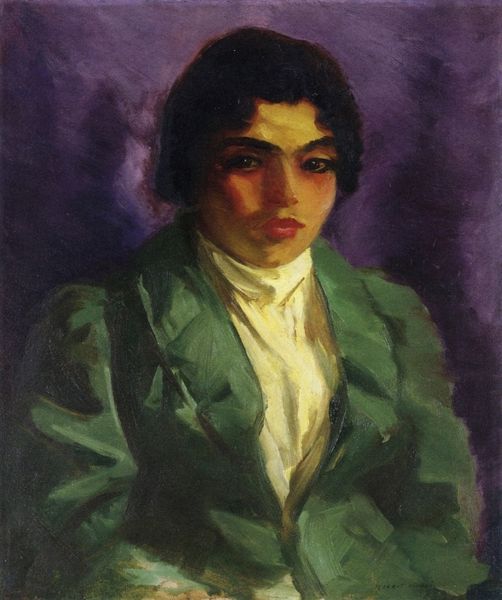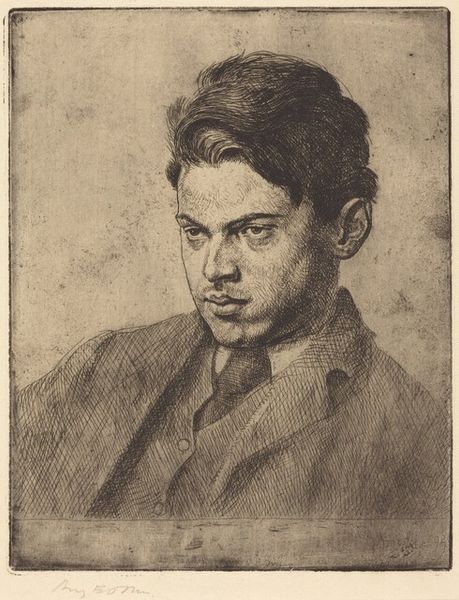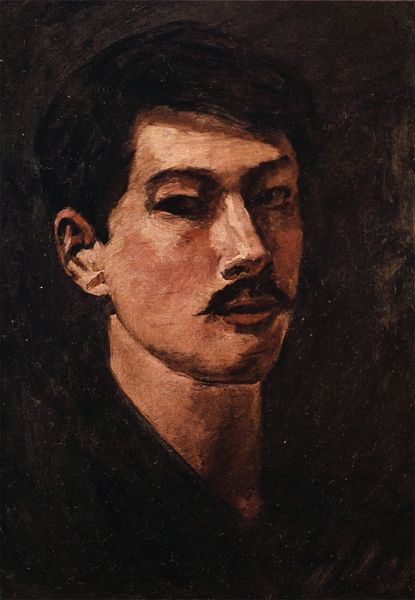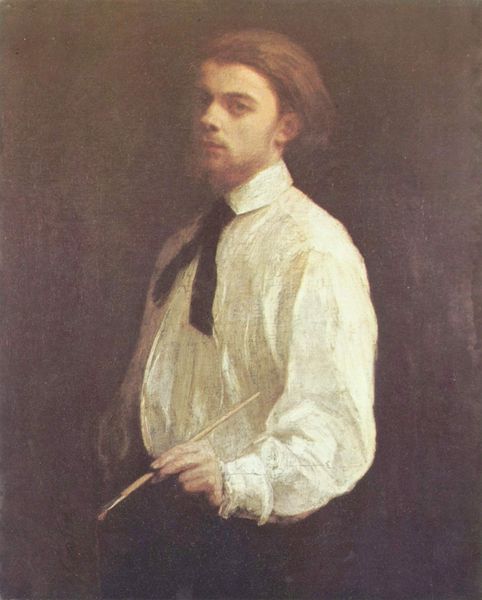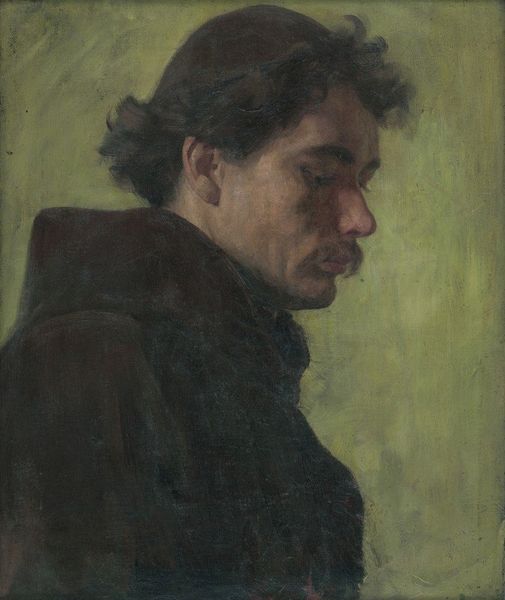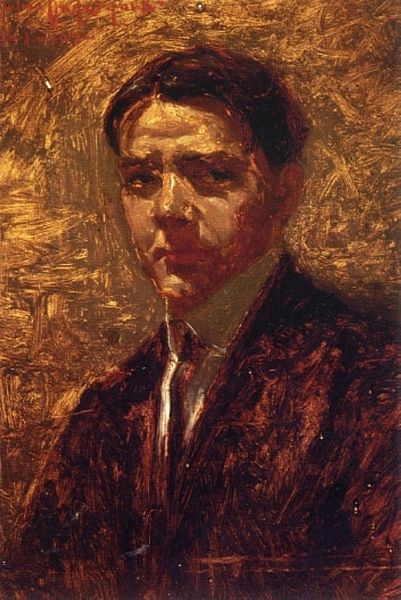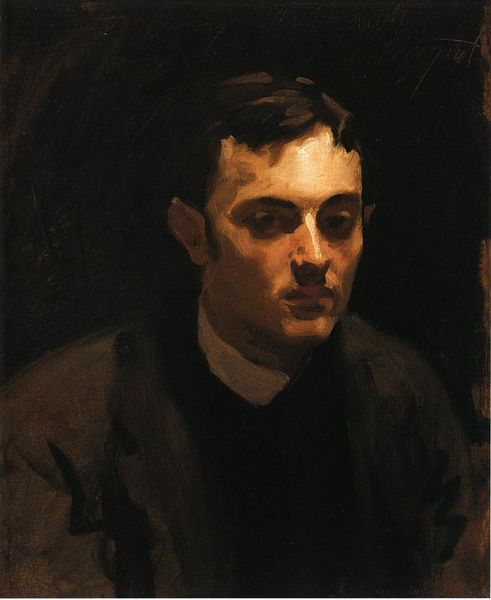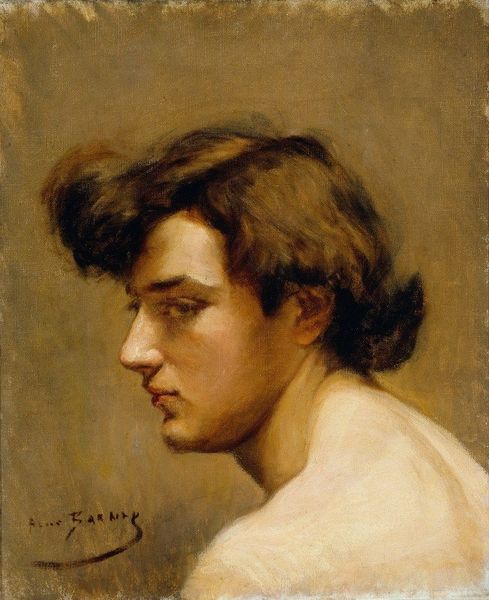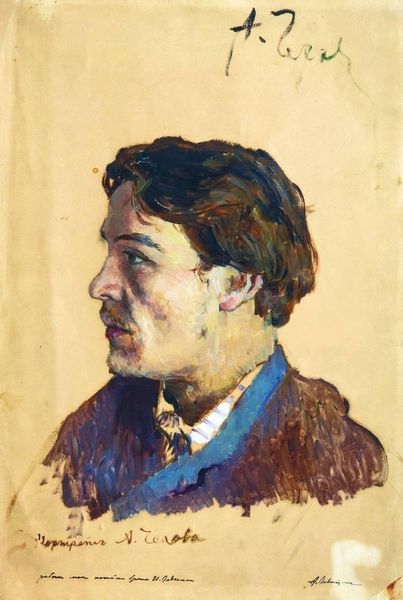
painting, oil-paint, impasto
#
portrait
#
painting
#
oil-paint
#
oil painting
#
impasto
#
romanticism
#
history-painting
#
realism
Copyright: Public domain
Curator: Here we have Gustave Courbet's "Portrait of Paul Verlaine." Editor: There’s an incredible immediacy to it. The raw brushstrokes, particularly around the face, give a real sense of presence. I’m drawn to the way Courbet handles light and shadow. Curator: Indeed. This portrait offers a fascinating glimpse into the cultural circles of 19th-century Paris. Courbet, a leading figure in the Realist movement, paints Verlaine, the symbolist poet, capturing not just his likeness, but a spirit, if you will, of intellectual and artistic rebellion. The placement within Courbet's world certainly adds another layer to its meaning. Editor: Absolutely, and look at the materiality! It's oil paint, applied with an almost aggressive energy. You can practically feel the viscosity, the layering. It’s far from a smooth, polished academic style. The making is visible; we witness the labor of creating an image. It challenges conventions of portraiture. Curator: That raw quality you mention reflects Courbet's broader artistic project: to depict the world as he saw it, without idealization or artifice. It reflects his socialist leaning too. This clashes directly with the conventions upheld by the French Salon at the time. This portrait almost functions as a statement piece within that art world, an outright act of defiance. Editor: A defiant portrait! And those muted colors—browns, grays, and whites—further amplify the grounded realism, devoid of overt embellishment. You can really appreciate his labor through the handling of oil paint on the canvas, how Courbet coaxed a likeness, a psychological presence, out of this base material. It speaks to the value and skill embedded in the crafting of an artwork. Curator: Considering Verlaine’s tumultuous personal life, and his own challenging the norms of society through poetry, there is a convergence here with Courbet that really solidified an image of rebellious intent for both parties. They become representatives of progressive ideals, linked through visual imagery. Editor: It gives one a deep appreciation of materiality and artistry that’s lost in today's overwhelmingly digital image culture. This portrait stands as a testament to an investment in human labor and material process. Curator: A crucial reminder, yes. Editor: Thanks for elaborating.
Comments
No comments
Be the first to comment and join the conversation on the ultimate creative platform.
